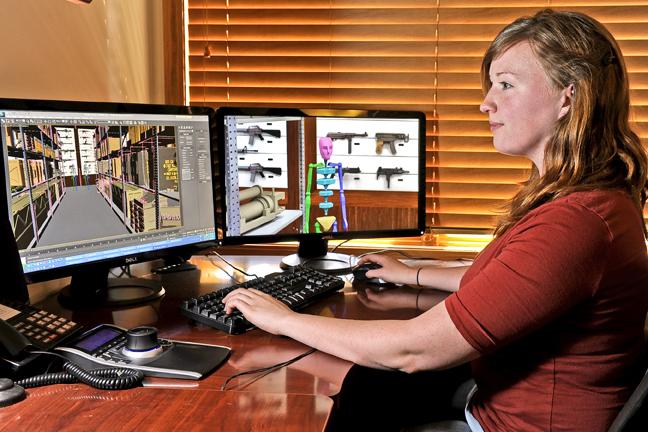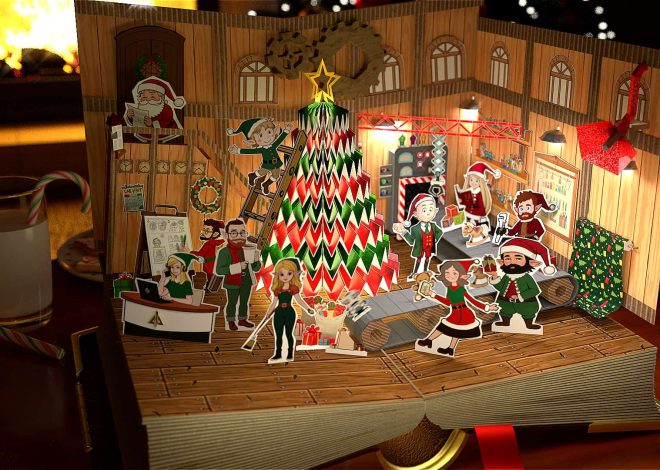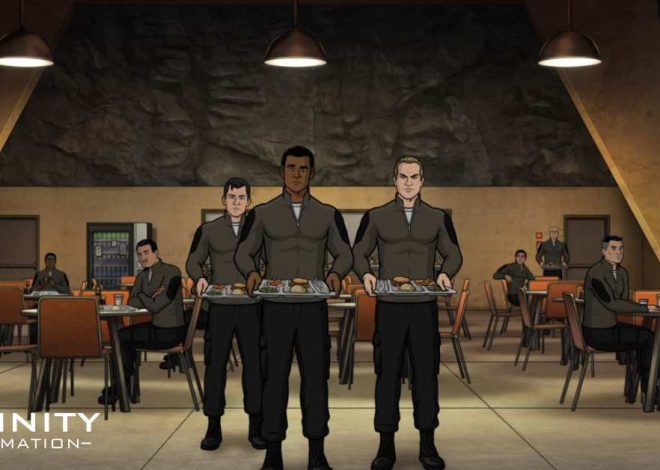
Kansas City Animation Studio Draws Growth
The Kansas City Business Journal wrote a feature on Kansas City Animation Studio Trinity Animation in 2010, discussing the company’s history and recent growth, in a section of the newspaper called “growth strategies.” The feature also touched on recent work for Floyd County Productions in creating background art for their hit series on FX “Archer.”
Secret agent
For most of its 16-year history, Trinity Animation was a slow-growth company, its three employees grabbing art jobs where they could and buying new computers and servers when affordable to avoid taking on debt.
In the past three years, however, the Kansas City animation studio has taken off. It has doubled its revenue to about $1.5 million, tripled the number of employees and received national exposure in the winter doing backgrounds for FX Network’s edgy animated spy spoof “Archer,” now headed for a second season.
CEO Jim Lammers credited the boom to an improved website, which he said allowed Trinity to better show off its work, as well as successful marketing and companies becoming more interested in using the firm’s brand of animation and photorealistic renderings.
“It’s not been the easiest,” said Lammers, a former engineer who founded the company in 1994 after getting interested in computer art as a hobby. “But by being aggressive and diversifying and making the case for visualization to a lot of customers, we’ve been able to find new markets for our services.”
Trinity produces computer-generated art for a range of industries, from animated walk-throughs of speculative homes for architecture firms to forensic illustrations for court cases to computer mannequins for market research by garment companies such as Tommy Hilfiger.
The photorealistic qualities of modern computer simulation, as well as the ease with which clients can make changes, have brought Trinity a lot of work helping engineers, designers and other firms develop and market prototype products.
For example, Lammers showed on his computer an image of an office meeting room with a table and chairs Trinity worked up for Kansas City furniture designer Hi5 Furniture.
Hi5 could get a similar result from a standard photograph, he said. But once the designs have been modeled and rendered in the computer, Hi5 can change the colors of the fabric, the texture of the wood, where the chairs are in the room, the angle of the image or even swap out newer designs without having to rehire a photographer — or spend the money building the furniture itself.
“We particularly like the prototype phase because the editing is so easy,” Lammers said. “A lot of times people like to be out there marketing and promoting and selling something long before they’ve actually built it.”
He said the company’s website has been a big help after receiving a complete upgrade in December 2008. The site had been mostly pictures and text, and Lammers said he knew he needed a more attractive way to show the company’s animation work. Lammers said he found a local programmer on craigslist who helped complete the site quickly.
He also hired the company’s first dedicated marketing employee around that time, helping concentrate business development in several industries.
Trinity also uses rapid prototyping, in which Trinity designs and renders the 3D model of a prototype and then sends it to another computer to re-create that model out of plastic, a technique the company has used to make such things as costume heads for children’s TV shows and imitation slate roof tiles.
Trinity also does simpler work, such as rendering logos or items that clients then can add to their software programs.
BEST ANIMATION STUDIO IN KANSAS CITY
“If I have them working on something, I know it’s going to be good work, and I won’t have a lot of fluff time trying to get projects done.” – Stuart Cohen, Punch Software
For example, Kansas City-based Punch Software uses Trinity-built images in programs it sells that allow regular computer users to design and visualize a dream house or plan landscaping in 3D.
“They’re really experienced at what they do,” said Stuart Cohen, Punch’s director of partner programs, who has known Lammers for about 12 years. “If I have them working on something, I know it’s going to be good work, and I won’t have a lot of fluff time trying to get projects done.”
In addition to straight art work, Trinity also has a retail business selling 3D art-rendering software and rents space on its “render farm” — 27 dual quad-core workstations that crunch the millions of calculations required for computer art — to clients doing work for themselves.
Lammers said the businesses often act synergistically: Clients buying the software or renting render farm space sometimes ask Trinity to take over the next job once they see the quality of the work.
In terms of finding animators, the company stresses art above technology, Lammers said, saying it’s easier to train people to use the animation software than train technicians to be good artists.
Lammers acknowledged that being involved in so many different types of art and animation has made it hard to build a reputation as being especially skilled in any one sector. But he also said that in times of economic change, it’s good to be diversified, and “for myself and the five animators who work here with us, we think life is a lot more fun.”
“Archer” certainly has raised the fun quotient as Trinity builds the offices, embassies and bedrooms frequented by the show’s cast of comically flawed spies and bureaucrats. Centered around the boorish and clueless James Bond clone Sterling “Duchess” Archer, the show received good reviews for its dark and sometimes naughty comedy during its first season, which ended in March.
Neal Holman, the art director for Floyd County Productions, which makes the show for FX, said he discovered Trinity’s website last year as he was frantically trying to find someone to do backgrounds. He said he liked what he saw from the website’s examples of 3D interiors but worried it would cost too much.
“It turned out not only could they do it in our price range but in much less time than I expected,” Holman said. “They can crank out backgrounds in two days, and they look better than a model that I’ve spent weeks on.”
Once the backgrounds are finished, artists add a virtual coat of paint to make the 3D model fit in with the cel-shaded characters.
Much like Trinity’s architecture and prototype design work, the big draw for Holman and series creator Adam Reed is that once a set has been created, the show can return to it and manipulate it in any way without rebuilding from scratch.
“I don’t have to limit myself in what angles I can shoot our characters at,” Holman said. “It’s much more like TV and film than it is animation.”
Lammers said he hasn’t noticed new business coming to Trinity because of “Archer.” But it has gotten him interested in possibly doing background work for other animators in the future.
“I think we’d have to go out there and pursue that a little bit,” he said. “I know this is a problem for everyone from ‘Scooby Doo’ going back. You need a painter to do that, and then you’re stuck to that one angle.”
Besides cartoons, Lammers said he thinks the future will include work from an even more diverse number of industries as computer software and rendering capabilities increase and more companies investigate 3D imagery. But he said he still will keep the growth curve measured and free of long-term loans or outside equity.
“To me it feels too much of going out on a limb,” he said. “As we could, we grew. I think it limited us from growing really rapidly, but I think that’s also how companies explode. It’s so easy to grow too fast.”
TRINITY ANIMATION
Top Executive: President Jim Lammers
Revenue: About $1.5 million
Employees: Nine
Address: 672 S.E. Bayberry Lane, Suite 101, Lee’s Summit, MO 64063
Telephone: 816-525-0103
Internet: www.trinityanimation.com



